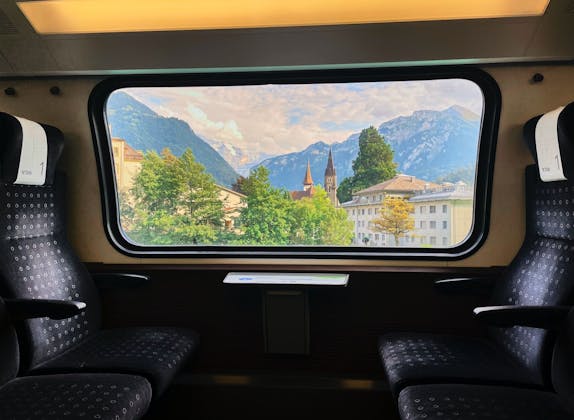
Saver Day Pass SBB - starting at 29 CHF
Validity: All day
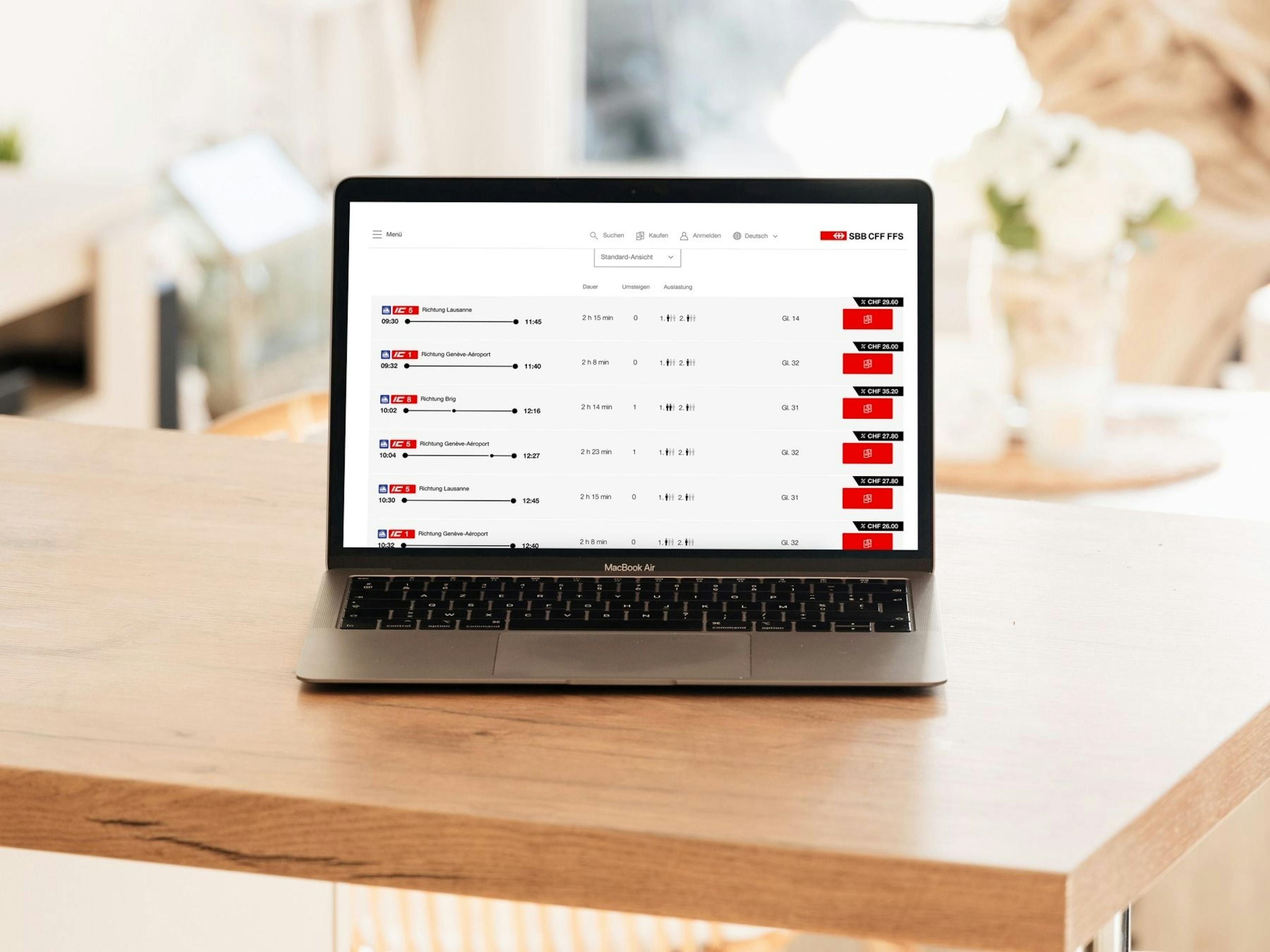
Train tickets in Switzerland are as varied as the means of transport on offer. Get an overview of the most important tickets available and where you can look up the SBB ticket prices. In addition, you will learn everything about the Half-Fare Card, the GA, the Supersaver Tickets, the various day tickets, the Family Card and much more.
No matter how diverse the public transport network in Switzerland is, the ticket landscape can feel like a dense jungle. It can be overwhelming to know all the details. Specifically, the SBB ticket prices are not easy to decipher. And let us assure you, sometimes even the pros are not 100% in agreement about how everything works.
In this article, we aim to give you an overview of the available tickets. Because with the right ticket in hand, you can save money in Switzerland. We'll delve into the most important tourist passes for your train journey in Switzerland in another article.
Are you ready for an expedition through the thicket? Then let’s start with some basics.
There are some basic principles governing tickets in the public transport system in Switzerland.
In Switzerland, it’s simple: one trip, one ticket. No matter who you’re traveling with. For example, if you’re traveling from Zurich to Zermatt, you take the SBB (Swiss Federal Railways) from Zurich to Visp. In Visp, you switch to the MGB (Matterhorn Gotthard Bahn) train and continue to Zermatt. Even though you’re using two different transport companies on your journey, you only pay one fixed price. This price combines the SBB ticket cost and the MGB ticket cost.
The same applies if your trip includes a bus or postbus ride. This means you can travel from Bern to Heiden in Appenzell Ausserrhoden with just one train ticket. You first take the SBB from Bern to St. Gallen and then switch to the postbus there.
It gets a bit more complicated if you want to use the local bus network, but we’ll cover that later…
Whether you buy a ticket for next week or your train leaves in two minutes, the price doesn't change. Of course, there is an exception to this rule - otherwise it would be boring. But basically it is irrelevant when you decide to travel. So you can plan to take the train in an hour and change your mind shortly before for a later connection.
All trains in Switzerland are subject to mandatory ticketing. During the last years, the possibility to buy a ticket on the train has been gradually abolished. Buying a ticket from the staff is only possible if you report to the staff before departure. The extra charge for this service is CHF 10 per ticket. Therefore, you should make sure that you have your ticket before boarding the train.
If you want to buy a ticket for your trip by public transport in Switzerland, you have many options.
When you buy a ticket in Switzerland, it will fall into one of two categories: route or zone. There are also combinations and subcategories, which we will explain to you later. Let's start with the two main categories.
If you're traveling between two places that aren't part of the same fare zone, you'll need a route ticket. This ticket is valid for a journey between your starting point and your destination. You can interrupt your journey as many times as you like.
For example, if you're traveling from Basel to Lugano and want to stop in Lucerne to spend the afternoon at the Lake Lucerne, you can do that. If you continue your trip on the same day and arrive in Lugano by the last train, that's not a problem.
Whether you purchase a one-way ticket or a round trip, your route ticket is valid for an entire calendar day. It doesn't matter if you need to change trains or even switch transportation modes during your journey.

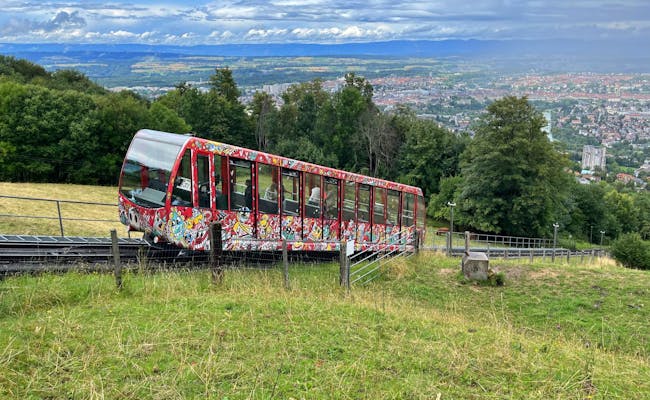
You can buy the poibt-to-point ticket either online via the SBB website, the SBB app, at the ticket counter or at a ticket machine.
Switzerland is divided into around 20 regional transport and fare networks. These all operate their own fare system, within which you travel with a zone ticket. While a point-to-point ticket is valid for one route, a zone ticket allows you to travel freely within one or more zones.
Depending on how long your trip is, your ticket is valid for longer or less time. This also varies from fare network to fare network. For example, if you travel from Zurich airport to Zurich main station, you move within two zones of the ZVV (Zürcher Verkehrsverbund). If you buy a single ticket, you can travel for up to two hours in the respective zones.
To give you a quick overview of exactly what to expect in this article, we're listing the tickets you're about to learn more about.
 Buy ticket at the train station (Photo: Swiss Travel System)
Buy ticket at the train station (Photo: Swiss Travel System) Zürich Hauptbahnhof (Photo: Swiss Travel System)
Zürich Hauptbahnhof (Photo: Swiss Travel System)The validity period is always specified on the ticket. If you're planning to make more than one trip, it can be worthwhile, depending on the fare zones, to buy a day pass. This pass is valid for an entire calendar day, allowing you to use all modes of transport within the purchased zones.
Most core zones, which encompass the center of a city, are usually charged at double the rate. This means that if you buy a ticket for Zurich's center and only one zone is indicated on it, you're actually paying for two zones. This is marked on the zone map with an asterisk (*) next to the zone number.
You can purchase the zone ticket either online through the SBB website, the SBB app, the website or app of the respective fare zone, at the counter, or from a ticket machine. Most fare zones have their own machines where you can also buy tickets. However, the SBB machines also offer zone tickets in their selection.
Now it gets interesting. It's also possible to combine the route and zone tickets. This combination is called the City Ticket. It works by combining the city zone with your route ticket, either at your starting or ending point. To illustrate this with a specific example:
You want to take a day trip from Bern to Lausanne. Since you'll be spending the entire day in Lausanne and don't want to walk everywhere, you’ll be using local public transport. Therefore, you’ll need a route ticket for the trip from Bern to Lausanne, and a zone ticket for local transport in Lausanne.
One option would be to buy both tickets separately. However, if you choose the combination in the form of the City Ticket, you save some money, as SBB offers you a 10% discount.
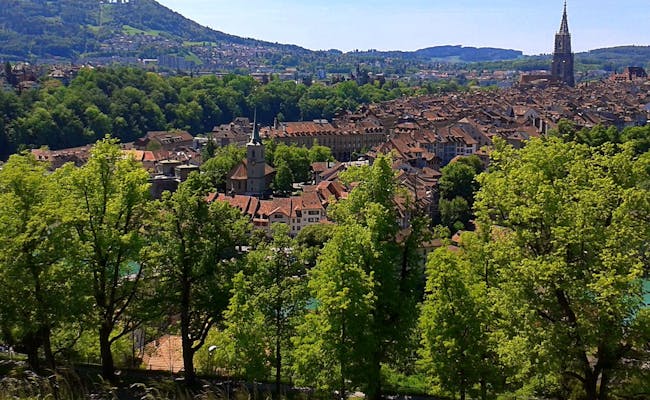 Rose Garden in Bern (Photo: Seraina Zellweger)
Rose Garden in Bern (Photo: Seraina Zellweger)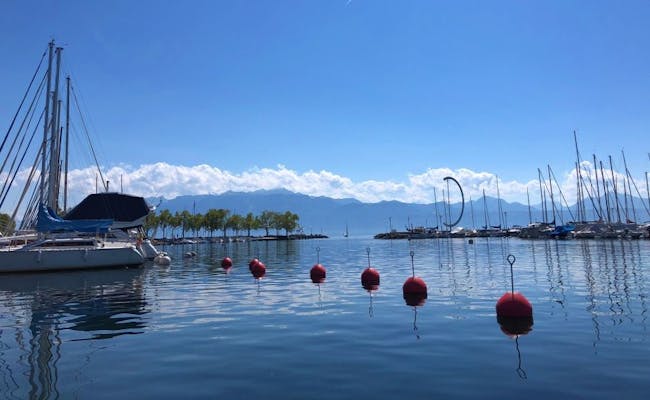 Lakeshore in Lausanne (Photo: Seraina Zellweger)
Lakeshore in Lausanne (Photo: Seraina Zellweger)There’s another version of the City Ticket where you add the local zone at your starting point instead of your endpoint. In our case, this would mean using the local public transport in Bern and then traveling to Lausanne. In this version, the transport options are valid in the core zone in Bern rather than in Lausanne.
Both versions of the City Ticket can be purchased online through the SBB website, the SBB app, at the counter, or from a ticket machine.
If you choose the second version of the City Ticket – the one where local transport is valid at your starting point – it only makes sense to buy it via the app or the website. Once you arrive at the counter or ticket machine at the station, you won’t need the bus or tram anymore.
One significant advantage of the Swiss public transport ticket system, in our opinion, is its flexibility. Whether you want to travel at 8:02 AM or 4:32 PM doesn’t matter. You buy your ticket, and you’re set for the day. However, this principle does not apply to the Saver Ticket.
As the name suggests, this ticket costs less than regular tickets. The savings vary widely, ranging from 5% to 70%. However, there’s only a limited number of Saver Tickets available, and once they’re gone, they’re gone. Generally, the earlier you book, the more likely you are to find a great deal. This applies not only to SBB ticket prices but also to tickets from other Swiss transport companies.
Of course, nothing comes for free here, and these price reductions come with certain restrictions. Here are the features and rules that apply to the Saver Ticket:
Swiss Activities Tip: Sometimes, the fare for the first class can be lower than that for the second class with Saver Tickets. While it's rare, it might be worth comparing first-class prices when booking a Saver Ticket.
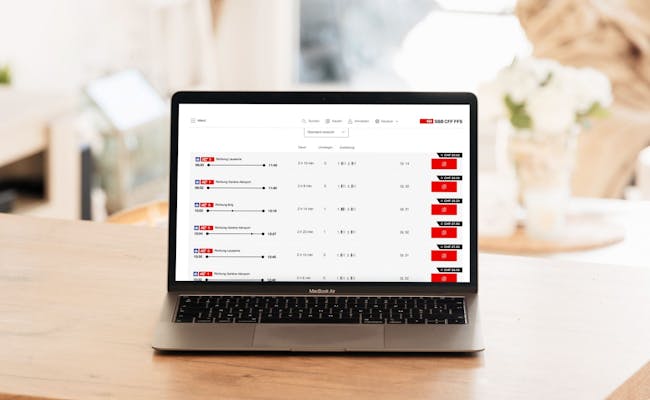 Book SparTicket online (Photo: Seraina Zellweger)
Book SparTicket online (Photo: Seraina Zellweger) Traveling on a budget with the Saver Ticket (Photo: Swiss Travel System)
Traveling on a budget with the Saver Ticket (Photo: Swiss Travel System)Missing your connection is a hassle in almost every case. But it becomes really annoying when you travel with a Supersaver ticket. If you bought a Supersaver ticket with a transfer, for example from St. Gallen to Bern with a change in Zurich, and you miss your connection in Zurich because of a delay, you have to take action. Ask the conductor to confirm that the train was indeed delayed.
With this confirmation, board the next train to Bern. If you are checked and show your Supersaver ticket, which would have been valid for the previous train, you show the confirmation of the delayed train to the control staff. Then the whole thing is no problem.
Without confirmation it becomes risky and it depends on the goodwill of the control staff whether they tolerate your "excuse" or not. The same applies if you don't board the next possible train and decide to spend a few hours in Zurich. So don't dawdle too long and make sure you get to Bern.
The RailAway Ticket is designed for leisure travelers and offers the chance to combine entrance fees to leisure facilities with travel to and from the destination. Like the City Ticket, it provides a discount on SBB ticket prices. This discount also applies to all other rail companies.
On the RailAway website by SBB, you'll find a comprehensive overview of the institutions you can visit at a discounted rate with RailAway. To explain how the RailAway Ticket works in detail, let’s consider another example.
Let’s say you’re in Chur and want to visit the zoo in Zurich. You could buy a single ticket from Chur to Zurich and a zone ticket from Zurich main station to the zoo separately. Or, you can just buy a RailAway Ticket, which gives you a 10% discount on the train ticket from Chur to the zoo and a 20% discount on the entrance fee to the zoo.
The discounts can vary, and depending on your outing, you might save a bit more or a bit less. How much you benefit from each offer can be checked either online or at the ticket counter when you make your purchase.
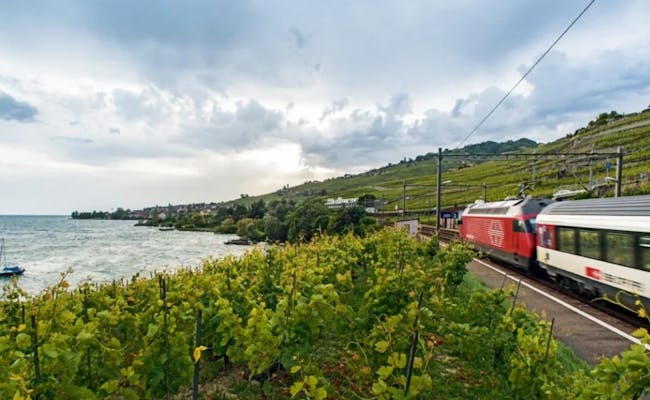 On the way with the Railaway Ticket (Photo: MySwitzerland)
On the way with the Railaway Ticket (Photo: MySwitzerland) Family at the ticket counter (Photo: MySwitzerland)
Family at the ticket counter (Photo: MySwitzerland)The Snow'n'Rail Ticket works in the same way as the RailAway Ticket. You benefit from a discount if you combine the journey by public transport with the entrance fee.
In this case, you guessed it, it is about the combination with ski passes
You can find the participating ski resorts here on the SBB website. Also with Snow'n'Rail, the price reductions vary, depending mainly on these three factors:
Again, you'll see how much you're profiting with this offer when you buy either online or at the counter.
Swiss Activities Tip: With Snow'n'Rail you not only get a price reduction on the trip and the ski pass, but also on the rental of your equipment. So if you need a pair of skis or a snowboard, buying a Snow'n'Rail ticket pays off twice as SBB has an agreement with Intersport Rent. Other discounts, such as on the transport of your luggage, will also be shown to you at the time of purchase.
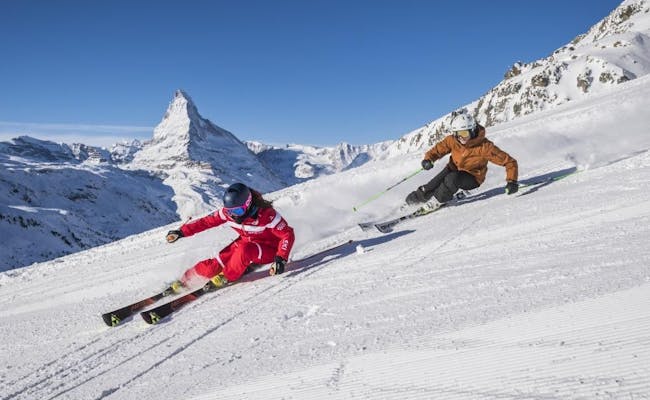 Skiing in Zermatt (Photo: Zermatters)
Skiing in Zermatt (Photo: Zermatters)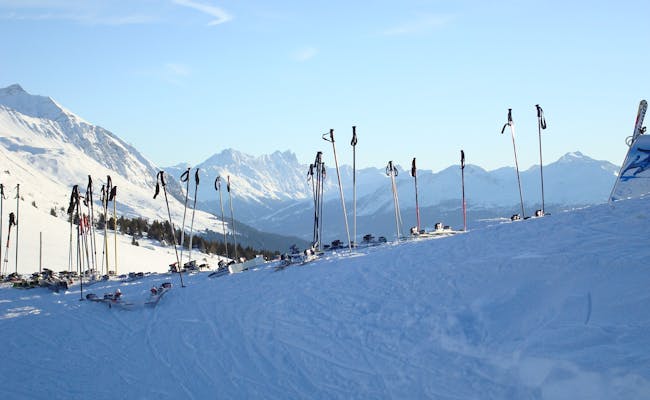 Skiing with Snow'n'Rail (Photo: Seraina Zellweger)
Skiing with Snow'n'Rail (Photo: Seraina Zellweger)You might be wondering what your options are if you don’t just want to buy a single journey ticket and plan to travel quite extensively by public transport in one day. And if you’d rather not try to decipher SBB ticket prices. Good news: the point-to-point ticket and the zone ticket are, of course, available in an extended version. And this is valid in the 5 most beautiful panoramic trains in Switzerland!
To travel throughout the entire public transport network in Switzerland for a day, there is the so-called Day Pass. This allows you to travel freely across the entire network of public transport in Switzerland, including trains, buses, postbuses, boats, and certain mountain railways. With the Day Pass, you can board wherever you like and have access to every public transport option available in Switzerland.
However, you can only purchase a Day Pass if you hold a Half Fare Card. (More on the Half Fare Card shortly.)
There is also a Saver Day Pass, which includes the same offerings as the regular Day Pass mentioned above and is available for people without a Half Fare Card. Saver Day Passes are limited in availability and usually sell out quickly. Especially the low prices are very popular and only available for a short time. So if you know when you’re traveling, it’s worth looking for a Saver Day Pass as soon as possible. You can find these up to 60 days before your travel date in the SBB web shop, along with more information about the Saver Day Pass.
The Day Pass is also available within fare zones. This allows you to travel freely for one day within the purchased zone. So if you’re making two or more trips in one zone, it might pay off, depending on the fare zone, to get a Day Pass right away.
This is particularly recommended if you’re sightseeing in a city and plan to make several trips, even if they are just short distances, using public transport throughout the day. You can get these Day Passes at the same locations where you find the zone ticket, either online, at the counter, or at all ticket machines.
 Ticket counter (Photo: Swiss Travel System)
Ticket counter (Photo: Swiss Travel System)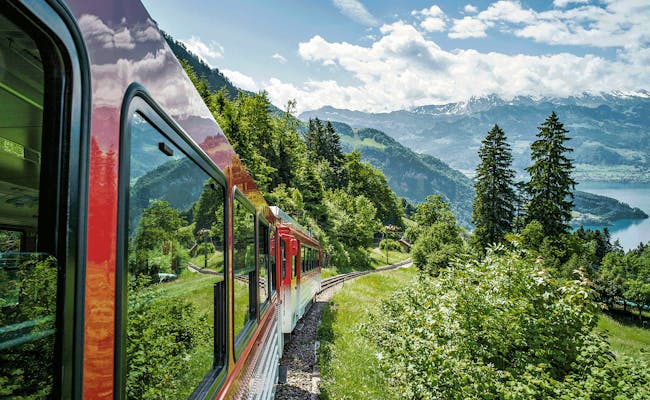 Train in Switzerland (Photo: Swiss Travel System)
Train in Switzerland (Photo: Swiss Travel System)A very important part of the Swiss ticket system is the Half-Fare Card, which is especially worthwhile for frequent travelers. As the name suggests, the Half-Fare Card entitles you to a 50% discount on all public transport tickets. It is available either as an annual subscription or for only one month.
The annual subscription only makes sense if you either live in Switzerland or are here for a longer period of time. It costs 185.- CHF and is available either online or at the counter at any Swiss train station.
If you are in Switzerland for a month or less, there is the Swiss Half Fare Card. This is valid for one month and costs 120.- CHF. During this time you benefit from the same advantages as the regular Half Fare Card. The Swiss Half Fare Card is also available either online or at the ticket counter. The area of validity of both Half Fare Cards is the same as for the Day Passes.
We have almost reached the end of the jungle. However, a few low-hanging vines remain to bring us to the end, and we would like to draw your attention to them.
If you want to take your bike with you on your trip, you have two options.
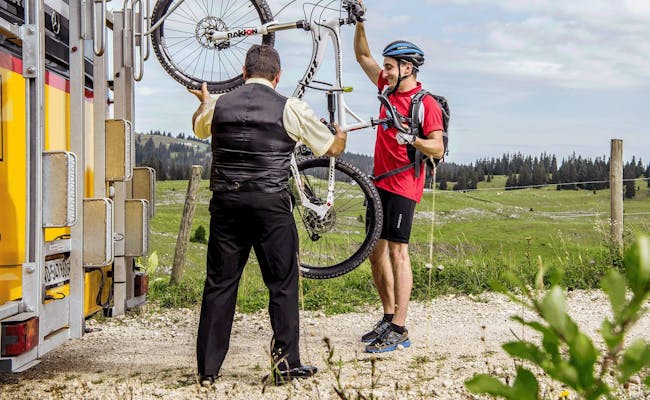 Bicycle transport PostBus (Photo: Swiss Travel System)
Bicycle transport PostBus (Photo: Swiss Travel System) Bicycle transport train (Photo: Swiss Travel System)
Bicycle transport train (Photo: Swiss Travel System)Swiss Activities Tip No. 1: Some trains require a reservation for your bike. You can see if this is the case for your connection when you buy your ticket online, on the app, at the counter or at the ticket machine. The reason for this is that ICN trains only have a certain number of seats available for bicycles. Therefore, you need a reservation on these trains between March and October for 5.- CHF.
Swiss Activities Tip No. 2: If your bike fits in a bag, you don't pay anything for taking it with you. If you are looking for such a bag, you can buy one at the SBB for just under 100.- CHF. For this to be worthwhile, however, you need to take your bike on a longer train journey at least five or six times.
If you’re traveling with a group of 10 or more, you can take advantage of a group fare that offers a 30% discount. You can find the exact details on the SBB website, and you can purchase the ticket either online or at the counter. One special feature is the long validity of the group ticket. A one-way trip is valid for 10 days, while for round trips, you can use the ticket for up to 30 days.
For dogs, the rules are quite similar to those for bicycles when it comes to fares. If your dog's shoulder height is no more than 30 cm and it travels in a bag, you don’t pay anything. Otherwise, you need to buy a reduced ticket or a day pass for your furry friend, which costs 25 CHF. You can find more information about traveling with your dog on the train on the SBB website.
For families, there’s a specially designed Family Card. This allows children between their 6th and 16th birthday to travel for free with their parents. You can get the Swiss Family Card for free when you purchase a ticket from the Swiss Travel System. This includes, for example, the Swiss Travel Pass. The Swiss Family Card is available worldwide at all sales points that offer tickets from the Swiss Travel System.
If you’re in Switzerland purely for tourism, this subscription isn’t relevant for you. However, there’s a ticket that's valid for all public transport in Switzerland for an entire year. It’s called the General Subscription (GA). If you’re not traveling extensively in Switzerland for a year, as many commuters do, this expensive subscription isn’t worth it.
It covers all routes accessible with a day pass and costs CHF 3,860 for adults. It’s a brilliant invention that you might have heard of but can just as easily forget. Unless you’re secretly planning to emigrate and want to explore every corner of Switzerland.
There's a special family card designed for families. It allows children aged between 6 and 16 to travel for free with their parents. You can get the Swiss Family Card for free when you purchase a ticket from the Swiss Travel System. This includes products like the Swiss Travel Pass. The Swiss Family Card is available for free at all sales points that offer tickets from the Swiss Travel System.
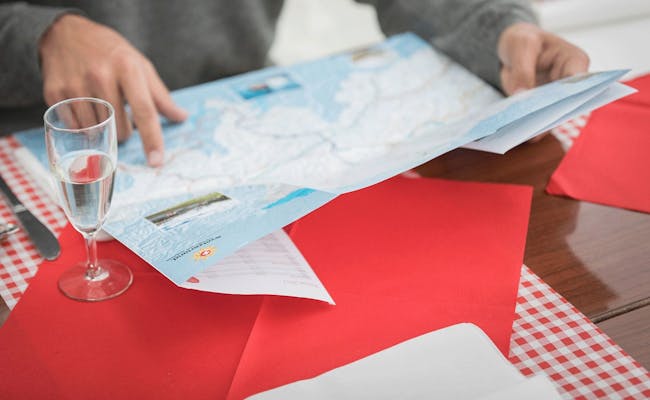 Public transport network in Switzerland (Photo: Swiss Travel System)
Public transport network in Switzerland (Photo: Swiss Travel System) Family on the Train (Photo: Swiss Travel System)
Family on the Train (Photo: Swiss Travel System)We have almost reached the end of the jungle. However, a few low-hanging vines remain to bring us to the end, and we would like to draw your attention to them.
If you want to take your bike with you on your trip, you have two options.
We are aware that all this information can be very overwhelming. But you now know the most important components of the Swiss public transport ticketing landscape. However, there's an invention that can make your life a lot easier. We're talking about the Easyride feature of the SBB app, which is the solution to (almost) all your problems.
To use this feature, you need to have an account in the app. After depositing a payment method, you'll have the option to check in and check out as you board and exit your mode of transportation. The app tracks your trip and charges you for the cheapest trip at the end of the day. So if you don't want to deal with issues like the city ticket or the validity period of the zone ticket, the Easyride feature is just for you.
Some tickets, such as the Day Passes, the Supersaver tickets and dog tickets still need to be purchased separately. But for the simple use of public transport, the Easyride function offers a very welcome relief.